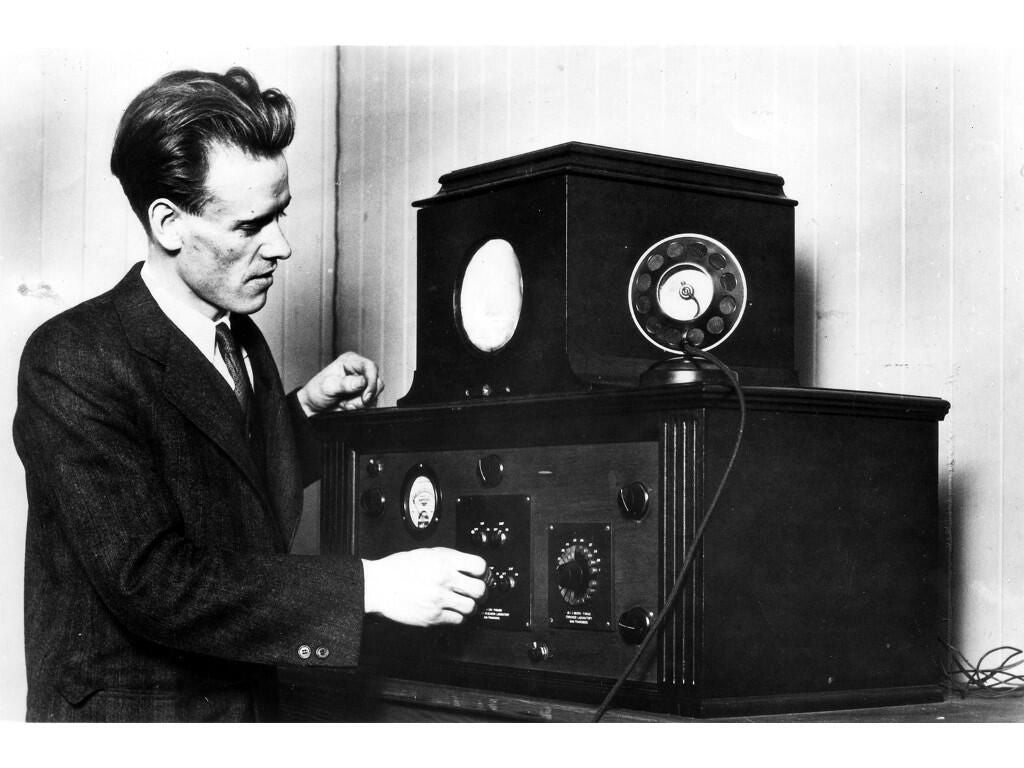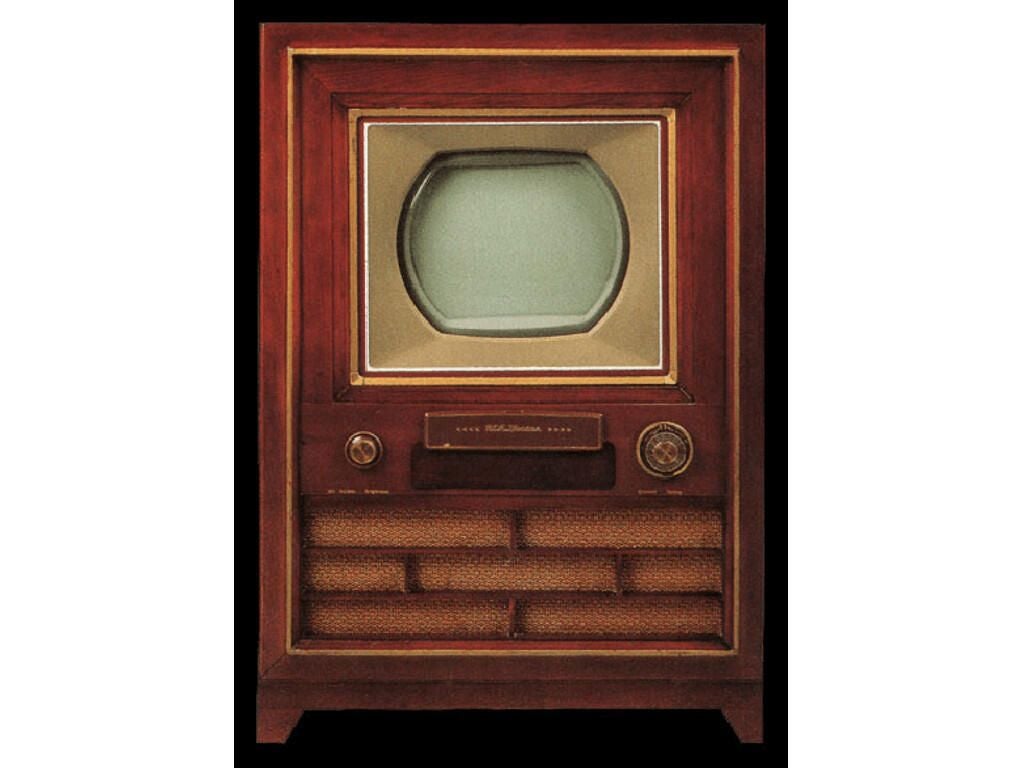Photos: 20 most important tech inventions of the past 100 years
Image 1 of 22


A century moves fast
A century moves fast
Picture life in 1918: World War I was in its closing months, a Ford Model T cost $500, and home radio units were just coming into being. Now just 100 years later we live in a digital age. Unbelievably powerful and always-connected computers live in our pockets, self-driving cars are fast becoming reality, and listening to music is as simple as asking Alexa to play a favorite artist.
The technology we enjoy today would be largely impossible if not for these 20 inventions. While the inventions may seem simple by today’s standards, our world was shaped by these marvels of the past century.


1918: Artificial fertilizer revolutionizes agriculture
1918: Artificial fertilizer revolutionizes agriculture
German chemist Fritz Haber invented a method of pulling nitrogen out of the air to create ammonia, for which he was awarded a Nobel prize in 1918.
The Haber method, as it is now known, was initially used to create explosives and chemical weapons during World War I, but by the end of the war it became the main method of creating artificial fertilizer.
Without the Haber method, the expansion of modern agriculture to support growing populations may not have been possible.


1923: The modern refrigerator
1923: The modern refrigerator
While refrigeration had been around for quite some time, and home refrigeration began in 1913, it wasn’t until 1923 that modern self-contained refrigerators became reality.
Frigidaire’s first self-contained refrigerator still didn’t see widespread use, and home refrigeration didn’t really take off until the invention of the artificial refrigerant Freon, which made cheaper and safer fridges possible into the 1930s.


1924: Wireless faxing
1924: Wireless faxing
The ability to send images and text over wire had been around for some time before Richard H. Ranger invented the photoradiogram, which was able to transmit an image of President Calvin Coolidge from New York to London–wirelessly–in 1924.
The wireless fax started a business communication revolution, allowing for the transmission of higher-quality images faster than ever before.
1926: Rocketry
The age of modern rocketry–that is, liquid-propelled rockets–began in 1926 with Robert H. Goddard’s first successful rocket flight.
Goddard’s rocket made many inventions possible, including space travel (though that would take several decades).


1927: Electronic television
1927: Electronic television
The first electronic television was invented by Philo T. Farnsworth in 1927, when he was only 21 years old.
Electronics company RCA offered to buy Farnsworth’s electronic TV patent for $100,000, but he refused, kicking off a lengthy legal battle that ended with RCA paying royalties to Farnsworth to use some of his patented components in its mass-market television sets.


1928: Penicillin
1928: Penicillin
British chemist and biologist Sir Alexander Fleming is responsible for the development of antibiotics, albeit accidentally.
Fleming returned to his laboratory in September 1928 after spending August with his family, and he found that a culture of staphylococci bacteria had been killed by mold that had contaminated the sample. That mold was part of the penicillium family, from which Fleming termed it penicillin.
The discovery of penicillin kicked off decades of drug research that has given us many of the cures we now take for granted.


1930: The jet engine
1930: The jet engine
The 1930s raised a wall in the path of aviation technology: Propellers, no matter how big or how fast they spun, could only get so fast.
Two engineers developed the modern jet engine, which uses the expulsion of fluid to create thrust, almost simultaneously. The first, proposed by Frank Whittle in 1928, later became the engine behind the UK’s Gloster Meteor aircraft. In 1930, the first patent for a jet engine was submitted.
The second jet engine inventor, German Hans von Ohain, made the first actual jet engine, and his experimental Heinkel He 178 became the world’s first aircraft to be solely propelled by jet engines in 1939.
While slow, the first jet engine made the world much smaller as it improved, leading to worldwide commercial flights that are now a common part of life.


1935: Radar
1935: Radar
Modern radar technology first came into being in 1935, thanks to the work of Scottish engineer Robert Watson-Watt. His experiments involved using radio signal to detect aircraft, and tests starting in 1935 led to the development of project Chain Home, a line of radar installations that warned the UK of incoming German aircraft.
We now use radar to track aircraft, predict weather, help ships navigate safely, map the Earth’s crust, and more.


1938: The modern farming combine
1938: The modern farming combine
Threshers, harvesters, and other crop reaping machines had been around for some time, but they required several things that slowed them down: A team of horses to pull them, or a second tractor to propel them.
That changed when crop harvesting was revolutionized with the 1938 invention of the Massey-Harris No. 20 self-propelled combine harvester. By eliminating the need for horses or separate tractors, the No.20 greatly sped up harvesting times, making more grain available to more people in less time. It, and machines like it, became part of improving food security in countries such as the US.


1940s: Color TV
1940s: Color TV
While the first mechanical color television was created in 1928, it wasn’t until the 1940s that commercially viable color TV technology came into being.
Several different methods were developed, including hybrids of electronic and mechanical color, such as CBS’ method, which involved using three primary color signals that were filtered through a spinning wheel that contained lenses of the same colors. Images produced by the CBS method worked, and quality was good, but flickering was a serious problem.
RCA later invented the world’s first fully electronic color system, which the FCC adopted in 1953. It wasn’t until the 1960s that color broadcasts became widespread.


1941: The first Turing-complete computer
1941: The first Turing-complete computer
A Turing-complete computer is one that is able to perform general calculations, as opposed to a non-Turing complete machine, which is built to perform one specific purpose.
Turing completeness was a fundamental step in computing technology, and in 1941 German engineer Konrad Zuse built the first electronic computer to be fully Turing complete.
Zuse’s Z3 was used during World War II to solve wing flutter problems in German military aircraft. It was destroyed in an allied bombing raid in 1943; the Z3 pictured above is a reproduction.
Turing-complete electronic computers are all around us in the modern world, for which we have Konrad Zuse to thank.


1947: The first semiconducting transistor
1947: The first semiconducting transistor
The inventions in this gallery are responsible for changing the world, but perhaps none was more important than the transistor.
While working at Bell Labs in 1947, John Bardeen, William Shockley, and Walter Brattain created the first transistor when their experiments found that a germanium crystal touched by two gold crystals created a signal which amplified the input power to create a signal with a greater output.
Their research has led to the tiny silicon semiconductors that are everywhere in modern life. Transistors were a leap in technology, quickly replacing vacuum tubes that use more power and are vastly larger.


1956: The first hard drive
1956: The first hard drive
Prior to 1956 computers had no practical way to store data outside of punch cards and paper printouts, and absolutely no way of randomly accessing data. That changed when IBM invented the IBM 350 Disk Storage Unit.
The IBM 350 was massive: 60″ wide, 68″ high, and 29″ deep. It contained 50 disks 24″ in diameter, and was capable of storing a stunning 5 million six-bit characters, or approximately 3.75 megabytes.
While primitive compared to today’s solid-state memory, the IBM 350 was an important computer first and changed how businesses stored and accessed data.


1963: Photography gets easier
1963: Photography gets easier
Digital cameras make it easier than ever to take good pictures without photography training, but in the 1960s point-and-shoot photography was just coming into being.
Kodak’s Instamatic was the first cheap, easy-to-use, and consumer-friendly camera to be widely available, and from 1963 to 1970 over 50 million were sold.
The Instamatic had a closed film cartridge, making loading and unloading simple, and the low price for both film and camera changed the way the world thought of photography.


1969: Packet-switching networks
1969: Packet-switching networks
The Advanced Research Projects Agency Network, also called ARPANET, was built in 1969 to serve as a network for Department of Defense computers. It was one of the first, and arguably the most important, to utilize packet-switching technology.
Prior to the invention of packet switching, networked computers behaved much like two telephones involved in a phone call: They had a dedicated line that connected them electronically.
Packet switching enabled multiple computers to occupy a single line, over which electronic data was sent in packets intended for a particular node on a network. Packet switching was a fundamental part of building the modern internet, without which we’d still be in an age of dedicated one-to-one computer connections.


1973: Internet Protocol Suite
1973: Internet Protocol Suite
ARPANET was the very first network to use the Internet Protocol Suite, commonly known as TCP/IP.
TCP/IP is a method of packaging, addressing, transmitting, routing, and receiving data across networks–it essentially takes packet switching to the next level.
While it may have been invented in 1973, it would take until 1982 for the US military to adopt it as the standard for all of its computer networks. TCP/IP was responsible for the rapid growth of ARPANET and the eventual growth of the modern internet because it allows more packets to move between more machines over a small number of dedicated lines.


1974: The first personal computer
1974: The first personal computer
Buying a computer in the modern age is as simple as picking one up at the store, but in 1974 it was a bit more complicated: The computer had to be built.
The Altair 8800 was the the first personal computer (called a micro computer in 1974), and it was vastly different from what we know of as a PC today. It had no monitor, no keyboard, and each task had to be programmed one binary command at a time using the switches on the front. A completed calculation would be displayed using the red lights on the front panel.
An Altair 8800 kit cost $439 USD in 1974, or about $1,996 USD in 2018. Micro Instrumentation and Telemetry Systems (MITS), the company behind the Altair 8800, only expected sales of around 800 units, but the first ad for the kit in the January 1975 issue of Popular Electronics flooded the company with orders. By August 1975 MITS had sold over 5,000 Altairs, and the home computing age had officially begun.
SEE: Photos–Inside the vintage Altair 8800 computer (TechRepublic)


1979: A new age in portable music
1979: A new age in portable music
Portable music used to be restricted to what the DJ decided to play on the radio, but with the invention of the Sony Walkman in 1979 the world’s music experience changed.
Sony cofounder Masaru Ibuka can be thanked for the drive to create the Walkman cassette tape player–he used to bring a bulk tape player on business trips to listen to music and requested that Sony executive deputy president Norio Ohga develop a small playback-only cassette deck. Thus the Walkman was born, and portable music became a part of life.
Sony predicted sales in the range of 5,000 units a month, but after two months of sales more than 50,000 Walkmen had been sold.


1983: Telephones go cellular
1983: Telephones go cellular
Car phones had been a thing for some time by the early 1980s, but 1983 saw the birth of the world’s first commercially available cellular telephone: The Motorola DynaTAC.
This brick of a cell phone was 13″ tall, weighed nearly two pounds, stored 30 phone numbers, offered 30 minutes of talk time, and took a whopping 10 hours to fully charge. It was also expensive: $3,995 USD in 1983, or approximately $9,800 today.
It may have had its limits, but we have the DynaTAC to thank for the modern mobile phone.
SEE: Photos–The evolution of the cell phone (TechRepublic)


1994: The first smartphone
1994: The first smartphone
We may think of the iPhone as the world’s first modern smartphone, but it was preceded by another touchscreen device by over a decade: The IBM Simon personal communicator.
You’ll be forgiven for not knowing of the existence of this 1994 proto-smartphone: It only sold for six months and moved a measly 50,000 units.
Regardless, the Simon was truly the world’s first touchscreen smartphone. It was able to receive email and faxes, and had apps including a calendar, address book, notepad, world clock, appointment scheduler, calculator, and other applications we typically associate with smartphones.
It was also roughly on par with the price of a modern flagship device: Its sole carrier, Bellsouth Cellular, offered it for $890 USD ($1,516 in 2018) with a two-year contract, or $1,099 ($1,872 in 2018) without a contract.


What will the future hold?
What will the future hold?
tFrom the agricultural revolutions to the modern smartphone, the world has changed a lot in the past 100 years, and there’s no telling how it will change in the next 100.
tNew technology trends, like home automation, self-driving cars, and other technology, can already be seen emerging in 2018, but do those items merit inclusion in the most important tech of the past 100 years? We may just have to wait until 2118 to find out.
Also see
- t
- Gallery: 15 unique analog and mechanical computers from throughout history (TechRepublic)
- The tech that change us: 50 years of technology breakthroughs (ZDNet)
- The evolution of office technology: From the typewriter to the tablet (ZDNet)
- What if? An alternative history of tech (ZDNet)
- 20 biggest tech innovations of my lifetime that I actually use (CNET)
- Bringing back the first computers: The world’s greatest restoration projects (TechRepublic)
- Photos: The women who created the technology industry (TechRepublic)
- The antique computers that just won’t quit (TechRepublic)
- Apple history: The 1MHz Apple I machines that now cost more than a family home (TechRepublic)
- Football meets tech: A brief history of technology on the gridiron (CNET)
- Photos: 60 years of NASA’s technological accomplishments (TechRepublic)
t
t
t
t
t
t
t
-
-
Account Information
Contact Brandon Vigliarolo
- |
- See all of Brandon's content
